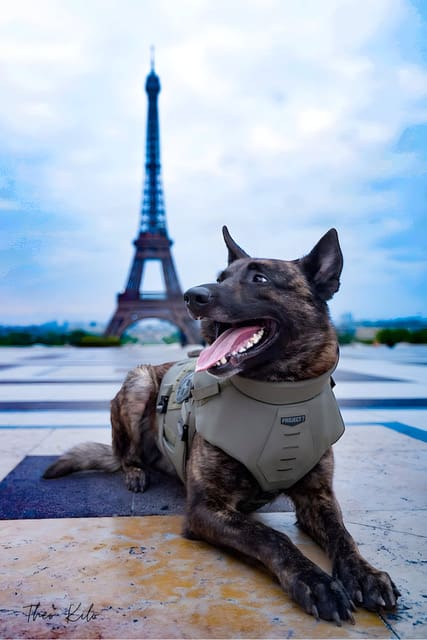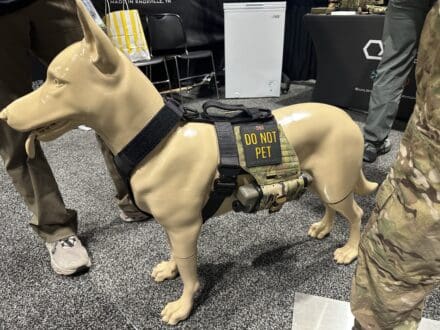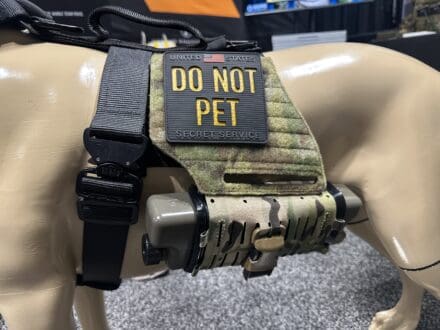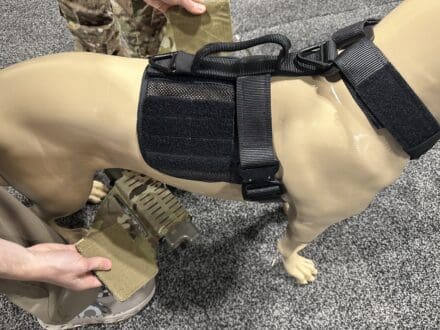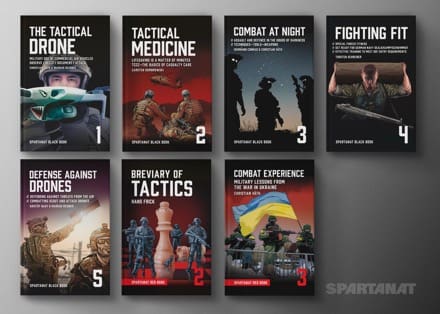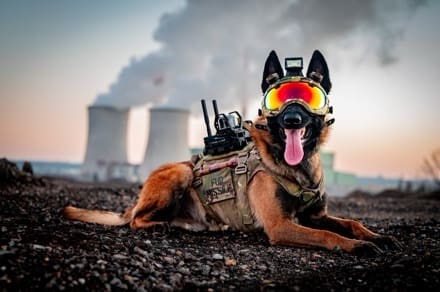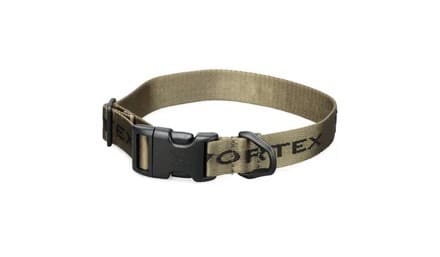Industry-leading orthopedic performance drink supplements now available to support the unique physical demands of America’s defenders – on two legs and four.
NEENAH, Wis., July 17, 2025 — SUPPLE, a 7-day fast-acting, premium joint health dietary supplement trusted by customers since 2006, is proud to introduce its Premium Glucosamine & Chondroitin and Boswellia products to our military, veteran, first responder, and K9 working dog communities through its Supple Squad Initiative. Designed to support joint comfort, mobility, flexibility, and protection under the most extreme conditions, SUPPLE products deliver high-quality ingredients backed by decades of research, without unproven ingredients or dosages found in many supplements.

Military service members, veterans, first responders, and working dogs endure relentless physical demands, including wearing heavy gear, performing repetitive tasks, and operating in extreme environments. Whether on long patrols, wearing heavy tactical gear, responding to dangerous emergencies, or supporting public safety operations, these communities need products that match their realities. SUPPLE’s premium joint health formulas are purpose-built for this lifestyle: supporting mobility, flexibility, and strength without hype or ineffective ingredients. Now purposefully introduced to those who serve, both two-legged and four-legged, SUPPLE is honored to help keep America’s defenders strong, mobile, and mission-ready. Military, First Responders, TEMS personnel, and their families can receive an additional 20 percent off any item from www.supplesquad.com with the use of unique discount codes from GovX.com.
“Our military and first responders face extraordinary physical challenges every day,” says Peter Apatow, Founder and CEO of SUPPLE. “It’s an honor to provide products that are designed to support their missions – supplements with premium, clinically effective ingredients they can trust to help them stay active, mobile, and ready for whatever comes next.”
The SUPPLE product line includes SUPPLE Drink Instant, SUPPLE Drink, SUPPLE TurboFlex Joint Health Supplement, and SUPPLE Pets Hip & Joint Health Chews.
 SUPPLE Drink Instant is a 7-day fast-acting, peach-mango flavored orthopedic performance drink mix designed to deliver powerful support for joint comfort, mobility, flexibility, and protection. It features premium European pharmaceutical-grade chondroitin sulfate—the same ingredient quality trusted by over 55 million people worldwide and prescribed by doctors in Europe for over 50 years—alongside high-purity, shellfish-free glucosamine. It also includes a premium Boswellia serrata AKBA extract, and vitamins C and D3 to help support muscle function, antioxidant protection, and bone health. Free from caffeine and sugar, SUPPLE Instant is ideal for service members, first responders, and veterans looking for clean, effective joint support that can fit into their demanding routines on base, in the field, or off duty.
SUPPLE Drink Instant is a 7-day fast-acting, peach-mango flavored orthopedic performance drink mix designed to deliver powerful support for joint comfort, mobility, flexibility, and protection. It features premium European pharmaceutical-grade chondroitin sulfate—the same ingredient quality trusted by over 55 million people worldwide and prescribed by doctors in Europe for over 50 years—alongside high-purity, shellfish-free glucosamine. It also includes a premium Boswellia serrata AKBA extract, and vitamins C and D3 to help support muscle function, antioxidant protection, and bone health. Free from caffeine and sugar, SUPPLE Instant is ideal for service members, first responders, and veterans looking for clean, effective joint support that can fit into their demanding routines on base, in the field, or off duty.
The original SUPPLE Drink, with over 100 million cans sold, remains a convenient, delicious way to support joint health and delivers the same benefits as Supple Instant. Each sparkling ready-to-drink can is packed with the same dosages of premium European pharma-grade chondroitin, glucosamine, Boswellia extract, and vitamins C and D3 found in SUPPLE Instant – plus a small amount of natural fruit juice for enhanced flavor. SUPPLE Drink contains a modest level of caffeine (unlike the caffeine-free Supple Instant), making it a refreshing option for those looking for joint support with a light energy boost. Whether on a long shift, traveling, or working through tough physical demands, SUPPLE Drink offers a ready-made option that fits right into a cooler or go-bag, keeping joint health support simple and effective for those who serve.

SUPPLE TurboFlex Joint Health Supplement is a premium capsule-based joint supplement developed to help support peak joint function and performance for active individuals. At its core is a clinically studied Boswellia serrata AKBA extract, a powerful gum resin of Indian frankincense, a plant that has been safely used in Indian Ayurvedic medicine for thousands of years. Standardized to a patented AKBA concentration, this key ingredient is backed by a strong Cochrane Collaboration review, strong clinical research, and is shown to help improve joint comfort, mobility, and flexibility in as fast as seven days. TurboFlex works by helping to block destructive enzymes that attack joints and by promoting an environment in which joints can move and perform at their optimal potential. Flexible dosing allows users to adjust based on daily needs, making it an ideal companion for personnel on deployment, in training, or responding to call-outs where drink mixes may not be practical.

Working K9s—whether in military, law enforcement, search and rescue, or service roles—face just as many physical stresses as their handlers. SUPPLE Pets Hip & Joint Health Chewsare formulated with premium, human-grade glucosamine and chondroitin to support canine joint health, mobility, and flexibility. Containing the same European pharma-grade chondroitin sulfate and glucosamine found in SUPPLE Drink, these tasty chews are an ideal daily addition for K9s engaged in active service, training, or retirement.
SUPPLE products are made in the USA with premium key ingredients sourced globally, are shellfish-free, and contain no fake or unproven ingredients or dosages. They are manufactured under FDA Good Manufacturing Practices (GMP) and are independently verified by the leading research firm, Eurofins.
Formulated for those who demand more from their bodies and their supplements, SUPPLE is built to serve America’s military, first responders, veterans, and K9 heroes.
For more information on SUPPLE, visit its website at www.supplesquad.com.




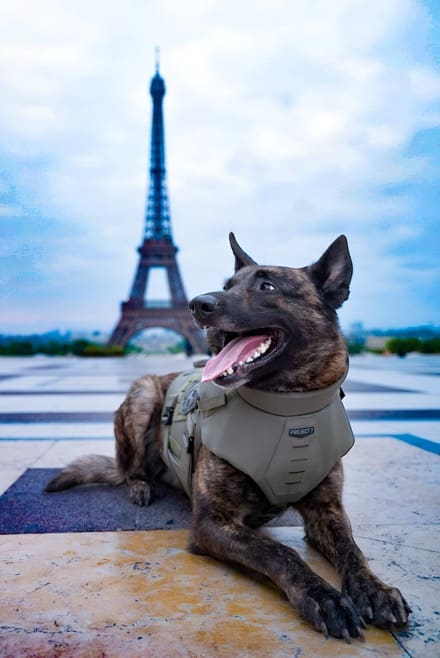

 SUPPLE Drink Instant is a 7-day fast-acting, peach-mango flavored orthopedic performance drink mix designed to deliver powerful support for joint comfort, mobility, flexibility, and protection. It features premium European pharmaceutical-grade chondroitin sulfate—the same ingredient quality trusted by over 55 million people worldwide and prescribed by doctors in Europe for over 50 years—alongside high-purity, shellfish-free glucosamine. It also includes a premium Boswellia serrata AKBA extract, and vitamins C and D3 to help support muscle function, antioxidant protection, and bone health. Free from caffeine and sugar, SUPPLE Instant is ideal for service members, first responders, and veterans looking for clean, effective joint support that can fit into their demanding routines on base, in the field, or off duty.
SUPPLE Drink Instant is a 7-day fast-acting, peach-mango flavored orthopedic performance drink mix designed to deliver powerful support for joint comfort, mobility, flexibility, and protection. It features premium European pharmaceutical-grade chondroitin sulfate—the same ingredient quality trusted by over 55 million people worldwide and prescribed by doctors in Europe for over 50 years—alongside high-purity, shellfish-free glucosamine. It also includes a premium Boswellia serrata AKBA extract, and vitamins C and D3 to help support muscle function, antioxidant protection, and bone health. Free from caffeine and sugar, SUPPLE Instant is ideal for service members, first responders, and veterans looking for clean, effective joint support that can fit into their demanding routines on base, in the field, or off duty.


